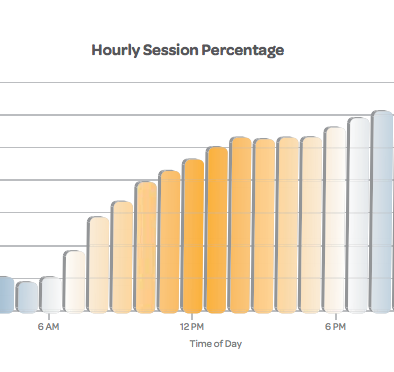A study released by communications firm GolinHarris during today’s SXSW panel on “The Promise and Pitfalls of Real-Time Marketing” provides new insights into the benefits of realtime marketing. The panel participants were Dow Chemical Director of Digital & Social Media Abby Klanecky, McDonald’s Director of Social Media Rick Wion, and Jeff Beringer and Jim Dowd of GolinHarris, who described how their brands and clients were using realtime marketing strategies.
The panel defined realtime marketing as strategies to deliver “communications in the right place, at the right time, with the right message.” Very often these communications are built on a stimulus–a relevant news story that serves as a springboard for the outreach, or the brand could be responding to specific customer inquiries or messages. According to GolinHarris’ Jeff Beringer, realtime marketing should be “planned, but not overly choreographed.”
For a consumer brand like McDonald’s this often means being present to share an experience with your fans. “When our fans are celebrating something, we can be there to celebrate with them,” explained McDonald’s Rick Wion, who was wearing a #shamrockshake tshirt. “It’s like a virtual high-five to fans.”
For a business to business company like Dow Chemical, realtime marketing initiatives are more likely to be focused around answering questions. “When people are genuinely curious about your product, its a wonderful thing,” said the company’s Abby Klanecky, who is working to train Dow Chemical scientists to interact directly with their customers using social media tools.
The aim of the GolinHarris research was to understand how people think and act in relationship to diverse products and brands–and how those behaviors and attitudes are impacted by realtime marketing activities. The report, based on interviews with 3,200 U.S. consumers, defines realtime marketing as “systematic, multi-channel engagement based upon real-time insights.”
The study findings are grouped around four major learnings:
#1: Real-time marketing gets results
The use of realtime marketing techniques improved the results for each of five different outcomes that matter to marketers: an increase in positive perceptions; interest in a product; likelihood to seriously consider, choose or try a product or brand; and likelihood a consumer will recommend the brand to others. Each of these outcomes improved with the use of realtime marketing techniques. The most impressive improvement was a 22 point increase in customers’ likelihood to seriously consider trying a product/brand.
#2: Realtime marketing turbocharges a brand’s other marketing efforts.
The study measured the effectiveness of several marketing investments–including brand websites, social media, search marketing, media receptivity and word of mouth programs–before and after the use of realtime marketing, revealing marked lifts in performance with the addition of realtime to the marketing mix. Word of mouth campaigns and media receptivity both improved by 17 percentage points when realtime marketing initiatives were added to the mix.
#3: Realtime marketing increases positive behaviors.
The study also compared before and after realtime marketing impact scores for different types of brands – market leaders, legacy brands, and challengers – in several product categories: lower cost, lower involvement products such as coffee, and higher cost, higher involvement products such as cars. Realtime marketing delivered a significant uptick in desirable behaviors across every brand and product category investigated. The most dramatic impact was for product categories that require higher levels of involvement from consumers, such as automotive brands.
#4: Brand matters.
Communications delivered through realtime marketing had significantly more impact when a brand was clearly defined. Brand-specific realtime marketing saw a 54% increase in positive behaviors toward brands, while non-brand specific realtime marketing created only a 41% increase. In other words, brands that create high-value realtime content and interactions for customers shouldn’t be shy about attaching their brand to that content.
In addition to the brand and marketing benefits outlined in the research, the panel also discussed the benefits of using realtime marketing to gain real insights into their audiences, insights that can lead to new campaigns, messages, better targeting and even speed time-to-market for new product launches.
“We are in a time when speed beats perfection every time,” said Dow Chemical’s Abby Klanecky.
To see the complete study, go to http://golinharris.com/#!/insights/real-time-marketing-research/.
To learn more about the panel discussion, check out this Storify post by Henriette Høyer.


